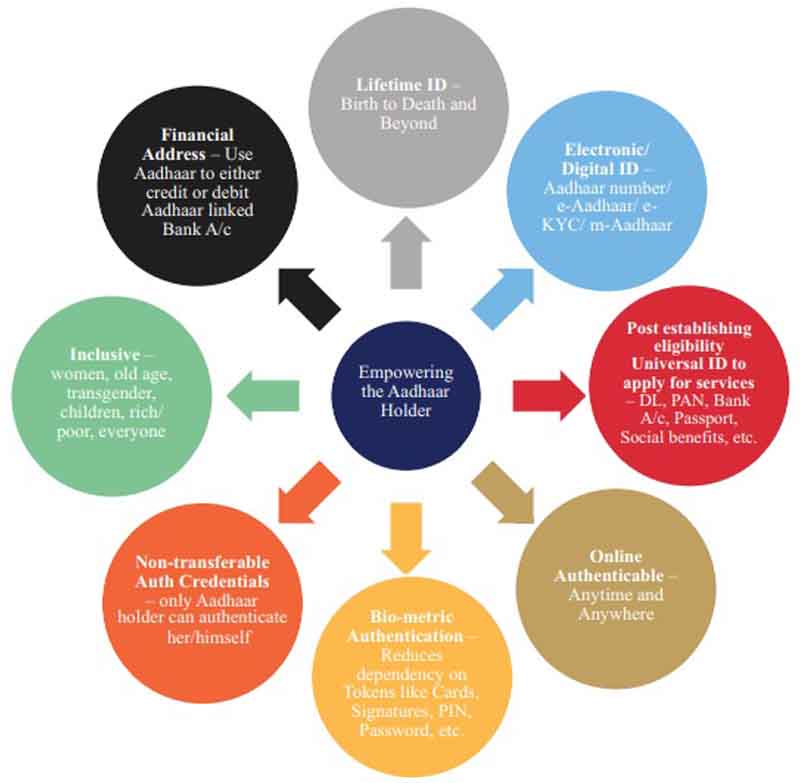- India
- Aug 16
Explainer / What is Baal Aadhaar?
The Unique Identification Authority of India (UIDAI), custodian of Aadhaar, has enrolled more than 79 lakh children aged below 5 years during April to July this year.
The enrolment is part of a renewed effort to reach out to more children in the 0-5 age group under the Baal Aadhaar initiative and help parents and children avail multiple benefits.
While 2.64 crore children in the 0-5 age group had Baal Aadhaar as of March 31, 2022, this number has increased to 3.43 crore by the end of July 2022.
Overall, Aadhaar saturation at present is around 94 per cent. Aadhaar saturation among adults is almost 100 per cent.
Baal Aadhaar
• Children in the age group of 0-5 years are issued Baal Aadhaar.
• Baal Aadhaar works as a facilitator in availing several welfare benefits, and also works as a digital photo identity for children right from birth.
• Collection of biometric (fingerprints and iris) data is a key feature in issuing Aadhaar as the same is required to establish uniqueness. However, for Aadhaar enrolment of children in the age group of 0-5 years, these biometrics are not collected.
• To differentiate the Baal Aadhaar from normal Aadhaar, it is issued in blue colour, with a remark that this is valid till the child attains the age of 5 years.
• On attaining the age of 5, the child is required to furnish his or her biometrics at an Aadhaar Seva Kendra to complete a process called mandatory biometric update.
• The update goes through a de-duplication process. After completion of this process, the child is issued a normal Aadhaar without any change in the Aadhaar number.
Unique Identification Authority of India (UIDAI)
• The Unique Identification Authority of India (UIDAI) is a statutory authority established under the provisions of the Aadhaar (Targeted Delivery of Financial and Other Subsidies, Benefits and Services) Act, 2016 (Aadhaar Act, 2016) on July 12, 2016 by the government of India, under the ministry of electronics and information technology (MeitY).
• The Aadhaar Act, 2016 has been amended by the Aadhaar and Other Laws (Amendment) Act, 2019.
• Prior to its establishment as a statutory authority, UIDAI was functioning as an attached office of the then Planning Commission (now NITI Aayog).
• On September 12, 2015, the government revised the Allocation of Business Rules to attach the UIDAI to the Department of Electronics & Information Technology (DeitY).
• UIDAI was created with the objective to issue Unique Identification numbers (UID), named as Aadhaar, to all residents of India.
• UIDAI has its headquarters in New Delhi and functions through its eight regional offices situated in Bengaluru, Chandigarh, Guwahati, Hyderabad, Lucknow, Mumbai, New Delhi and Ranchi.
• UIDAI has two data centres – one at Hebbal (Bengaluru) in Karnataka and the other at Manesar (Gurugram) in Haryana.
• The first UID number was issued on September 29, 2010 to a resident of Nandurbar in Maharashtra.
• Under the Aadhaar Act 2016, UIDAI is responsible for Aadhaar enrolment and authentication, including operation and management of all stages of Aadhaar life cycle, developing the policy, procedure and system for issuing Aadhaar numbers to individuals and perform authentication and the security of identity information and authentication records of individuals.
• The objective of Aadhaar is to empower residents of India with a unique identity and digital platform only for the purpose of identity proof.
• Aadhaar is a 12-digit unique ID issued to an individual. Aadhaar uses demographic information (name, date of birth, gender and address), photograph of the face, fingerprints and iris to identify a resident. These items of information are mandatory.
• Aadhaar number is a proof of identity. It does not confer any right of citizenship or domicile in respect of an Aadhaar number holder.
Manorama Yearbook app is now available on Google Play Store and iOS App Store


